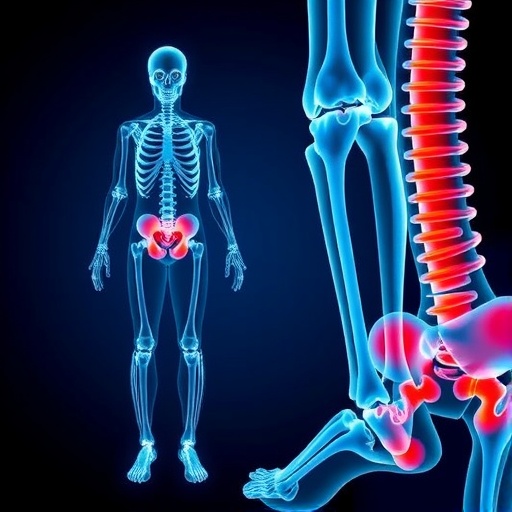In the rapidly evolving field of orthopedic disease analysis, a recent study led by researchers An and Wang has unveiled a sophisticated approach combining multi-objective decision-making strategies. Their innovative methodology integrates the entropy weight-TOPSIS method alongside the RSR method, offering advanced capabilities in evaluating complex clinical scenarios. This research holds significant implications for decision-makers in the healthcare sector, particularly in enhancing patient outcomes through informed clinical judgments.
The study meticulously unveils the potential of entropy weight-TOPSIS as a powerful decision-making tool that captures the relative importance of various criteria involved in orthopedic disease evaluation. Traditional methods often fall short in addressing the multifaceted nature of clinical decision-making, which involves balancing numerous variables simultaneously. Here, the researchers highlight how the entropy weight method allows for a nuanced assessment of these variables, quantitatively adjusting the significance of each factor based on its variability. In contrast to conventional approaches, this method presents a more dynamic understanding of the relative importance of different criteria.
Furthermore, the TOPSIS (Technique for Order Preference by Similarity to Ideal Solution) method is particularly adept at identifying the most favorable and least favorable treatment options. This capability is pivotal, especially in scenarios where the treatment landscape is crowded with diverse interventions. By integrating the TOPSIS method, the researchers can determine which orthopedic interventions represent the most balanced choices concerning both effectiveness and patient well-being. The study illustrates how combining the entropy weight method with TOPSIS culminates in a robust framework for providing clear actionable insights in orthopedic care.
In conjunction with these methodologies, the Relative Strike Rate (RSR) method further enriches the analysis by enabling the evaluation of treatment alternatives based on their relative effectiveness and patient outcomes. The RSR method is particularly crucial in complex cases, where varying degrees of efficacy must be compared across multiple treatment pathways. The combination of RSR with the previously mentioned methods creates a comprehensive matrix of data points, facilitating a more holistic view of the treatment efficacy landscape in orthopedic settings.
Through the application of these methodologies, An and Wang demonstrate a significant leap forward in decision-making paradigms within orthopedic disease analysis. The implications of their research extend beyond mere academic inquiry; they hold transformative potential for clinical practice. In an era where healthcare is increasingly data-driven, the ability to apply such methodologies directly translates into better patient management strategies, ultimately elevating the standard of care provided to individuals suffering from orthopedic conditions.
The researchers conducted an extensive validation of their approaches, confirming their efficacy through a series of case studies. Each case illustrated how the integration of these decision-making tools could lead to more accurate and tailored treatment regimens. In these scenarios, clinicians were able to utilize the findings to engage patients in discussions about their treatment options, fostering a shared decision-making environment that arguably serves to enhance patient satisfaction and outcomes.
Moreover, this study confronts the often cumbersome task of data interpretation in healthcare settings. Utilizing multi-objective decision-making tools simplifies the process, allowing healthcare professionals to swiftly distill complex datasets into actionable insights. This capability is paramount, especially in high-stakes environments where timely decisions can significantly impact patient health trajectories.
Another critical facet highlighted by An and Wang is the adaptability of their proposed methodologies across various orthopedic disease contexts. Whether dealing with degenerative diseases, traumatic injuries, or congenital deformities, the framework retains its versatility, ensuring that it can be tailored to meet the specific demands of diverse clinical situations. This flexibility is particularly valuable in the orthopedic field, where patient presentations and preferences can vary widely.
Furthermore, the study encourages the healthcare community to embrace such cutting-edge techniques to modernize decision-making processes. In a landscape where personalized medicine is becoming increasingly relevant, the need for systems that can dynamically respond to patient data is paramount. The entropy weight-TOPSIS combined with RSR method forms a foundational component for systems aiming to bring precision and personalization into orthopedic practice.
As healthcare professionals and decision-makers consider the implications of this research, it is essential to recognize the potential barriers to implementation. There may be a learning curve associated with adopting new methodologies, and more investment in training and infrastructure may be required. However, the long-term benefits of improved patient outcomes and optimized resource utilization significantly outweigh these initial challenges.
In conclusion, the study by An and Wang represents a significant advance in orthopedic disease analysis methodology. By seamlessly integrating multi-objective decision-making tools, the researchers have paved the way for enhanced clinical decision-making that prioritizes patient outcomes. This transformative research not only showcases the power of data-driven approaches but also highlights a future where technology and expertise converge for the benefit of patient care.
Healthcare stakeholders are encouraged to keep a close watch on these developments as they unfold and consider how such methodologies can be incorporated into everyday practice. As the landscape of orthopedic care continues to evolve alongside advancements in artificial intelligence and data analysis, the importance of effective decision-making tools cannot be overstated. With continued research and collaboration, the future of orthopedic disease management looks promising, directed by the insights and methodologies that An and Wang have brought to the forefront.
Subject of Research: Multi-objective decision-making in orthopedic disease analysis
Article Title: Application of multi-objective decision-making based on entropy weight-TOPSIS method and RSR method in the analysis of orthopedic disease.
Article References:
An, D., Wang, N. Application of multi-objective decision-making based on entropy weight-TOPSIS method and RSR method in the analysis of orthopedic disease. Discov Artif Intell 5, 208 (2025). https://doi.org/10.1007/s44163-025-00462-y
Image Credits: AI Generated
DOI: 10.1007/s44163-025-00462-y
Keywords: multi-objective decision-making, orthopedic disease, entropy weight, TOPSIS method, RSR method, patient outcomes.




